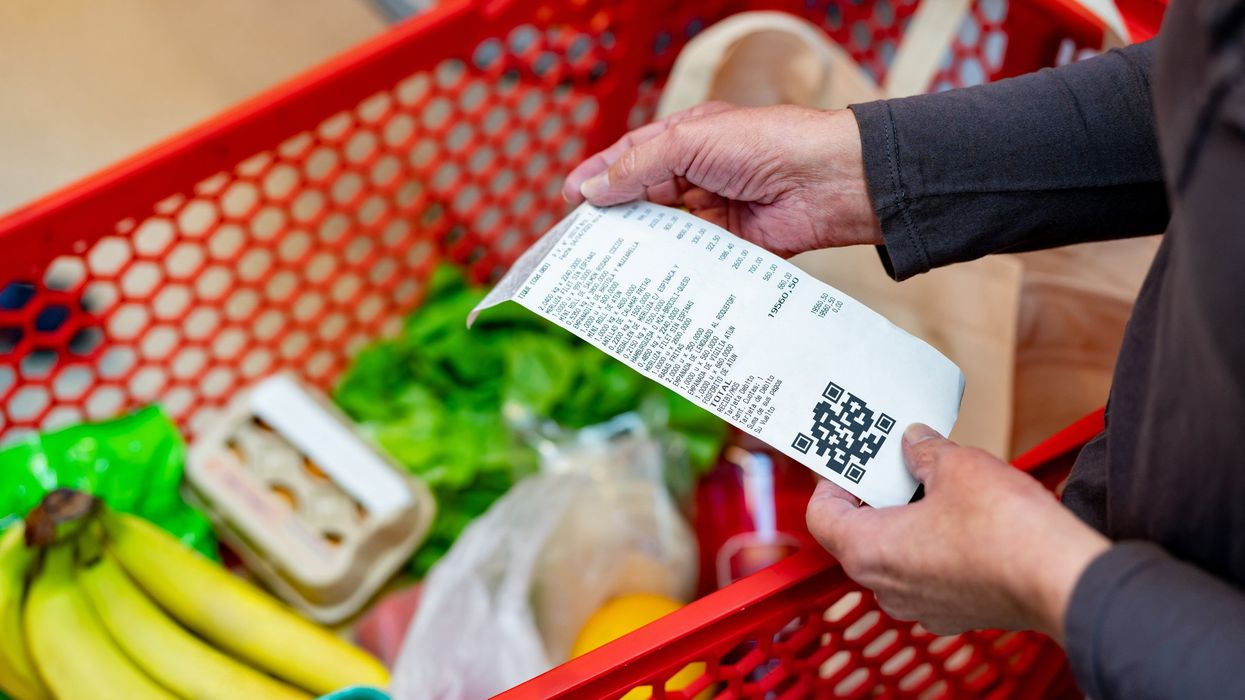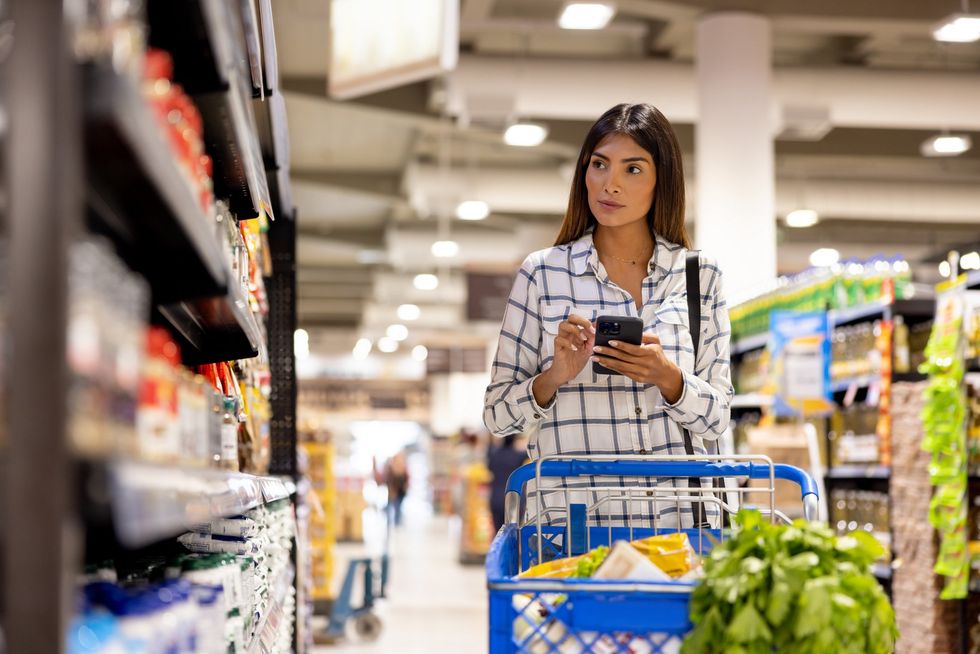
Hispanolistic/Getty Images

It remains to be seen whether this will hurt or help consumers.
Regardless of how the Biden-Harris administration downplays and denies it, grocery prices are rising, and Americans are struggling to put food on the table. Americans are spending the highest percentage of their income on food in three decades, with no sign of slowing down. By the end of last year, the average person was spending 25% more for the same grocery store products as they were four years earlier.
The trend is continuing: Groceries had already jumped 1.1% in cost on average by June of this year, and there is no end in sight. There are many reasons for this, including rising transport costs, higher minimum wage, and rising input price pressures, but there’s another factor to consider that should scare everyone who likes to eat: dynamic pricing.
Kroger insists that its ESL system is lowering prices for shoppers.
A recent letter from Senators Elizabeth Warren (D-Mass.) and Bob Casey (D-Pa.) to the CEO of the Kroger grocery store chain raises concerns about potential price gouging via electronic shelving labels.
They claim that chains like Kroger use “Electronic Shelving Labels (ESLs), to surge grocery prices and exploit working families. Digital price tags allow corporations to engage in dynamic pricing — changing the prices of goods based on temporary factors including the time of day or the weather.”
Consumer Choice Center media director Stephen Kent disagrees, saying, “Senator Elizabeth Warren has actively misled the media about Kroger's electronic price tags featured in a number of its stores. In theory, they could be used to enact dynamic pricing at the push of a button, but there is no evidence they've done this. Surge pricing is a staple of hospitality, entertainment, and transportation, and in a free market, you'd also see that in the grocery sector.”
Paper labels take a long time to go through and change, but ESLs can be changed in seconds. America’s largest grocery chain, Kroger, has been utilizing this technology in some locations since 2018 and currently uses it in around 500 of its stores nationwide, and Walmart uses it at around 2,300 locations. Surge pricing is nothing new on rideshare apps and online travel booking, but bringing it to necessities and everyday activities like shopping represents a new assault on consumers whose wallets are already being drained of life.
Kent disagrees, saying, “Instantaneous adjustments based on supply and demand is not malicious. If a truck hauling watermelons to a Kroger store tips over and loses that supply, why wouldn't that store then put a premium on the watermelons they have in stock? The thing about consumers is that when items are priced beyond what they're willing to pay, they don't buy it.”

However, it seems this ability to change prices so rapidly could lead to even greater potential danger when technology like facial recognition is implemented to gauge customer demographics and buying habits. With this, restaurants and grocery stores are trying to squeeze every last penny possible from consumers and track their every step. This isn’t speculation or a “what if.” Kroger and Walgreens have already been sued for using facial recognition technology without consent, and it's part of a broader trend.
As Corey Mintz explains of food chains using AI:
McDonald’s has been testing out AI since 2019, using license plates to identify repeat customers (with consent) and customize ordering suggestions at the drive-thru. More recently, Point Jupiter, a company that conducted a trial of face-recognition software within McDonald’s ordering kiosks, was able to scan users’ faces, recognizing their "gender, estimated age, and sentiment" in order to make meal recommendations.
Part of the goal is to target working individuals at the time of day when they are hungriest and near a drive-thru and to track user buying habits on a more precise level when they are grocery shopping. Senator Casey’s proposed Price Gouging Prevention Act and Shrinkflation Prevention Act both propose giving the Federal Trade Commission and state AGs the power to enforce rules against this, including stopping restaurants and corporations from selling smaller amounts of food at the same price.
A 2023 UCLA analysis on ESLs found that “the increase in the retailers’ profits may not be able to offset the decrease in consumer welfare, and could reduce the social welfare below the status quo” and further posits that “time-based pricing creates value for the stores (through higher prices) [but] offers no benefit to consumers.”
But Kent says the concerns are overblown and politicized, claiming that “ESLs make it easier for stores to restock shelves and rearrange items, and they also make it possible to lower prices in a hurry when a sale is coming down from corporate to individual stores. There's a misplaced level of focus on higher prices when we all know that grocery stores slash prices regularly on popular items.”
Select states, such as Illinois, have implemented stricter privacy laws regarding the unauthorized use of facial recognition, but surge pricing, which could quickly creep into dynamic pricing, remains very much in play.
“In addition to price gouging, the EDGE Shelf helps Kroger gather and exploit sensitive consumer data,” claim Warren and Casey. “Through a partnership with Microsoft, Kroger plans to place cameras at its digital displays, which will use facial recognition tools to determine the gender and age of a customer captured on camera and present them with personalized offers and advertisements.”
Kroger insists that its ESL system is lowering prices for shoppers. In a statement to Blaze News, a spokesperson for Kroger responded, “Kroger’s business model is to lower prices over time so that more customers shop with us, which leads to more revenue that we then invest in lower prices, higher wages, and an even better shopping experience.”
Kroger emphasized that “everything we do is designed to support this strategy, and customers are shopping more with Kroger now than ever because we are fighting inflation and providing great value. Any test of electronic shelf tags is to lower prices more for customers where it matters most. To suggest otherwise is not true.”
Hear more on the subject from the "Blaze News Tonight" team in the video below:
- YouTube youtu.be
Paul R. Brian